The Smart Operation Building: Five Keywords for Coronavirus-era Office Buildings
Yu Goto, Associate, Facilities Design Group, Engineering Department, Nikken Sekkei Ltd
(The positions in this article were current at the time of publication in July, 2020.)
Scroll Down
It has been three months since Tokyo first declared a state of emergency due to the COVID-19 pandemic. Even now, I work from home on most days. With some effort, I feel that it is surprisingly doable.
So, do we really need offices anymore? The answer to that question varies. Some companies have switched to full “telework” regimes, cancelling their office space contracts. Others are expanding their offices, securing them for social distance.
Personally, I think that offices are necessary. It offers a different environment from home, a comfortable chair, stable communications and incidental stimulation. There is also something else that I can't really put into words, something related to creativity and motivation in a space where I spend time with colleagues.
However, it must differ from the conventional office. At the very least, more attention than ever must be paid to reducing human contact and keeping rooms clean. Nikken Sekkei’s Smart Operation Building is one proposal I would like to introduce for a coronavirus-era office building. Please take a look at this concept video.
Due to its falling birthrate and aging population, Japan faces a shortage of some 6.4 million workers by 2030, according to forecasts. This is especially true for jobs related to building management, such as cleaning, delivery, and facility maintenance, where it is already becoming difficult to find human resources. The Smart Operation Building plan uses architectural ingenuity and technology such as robots to cut building management workload by 70% and solve the human resource problem.
Ideas contained in the proposal are also effective in reducing human contact in office buildings and keeping rooms clean.
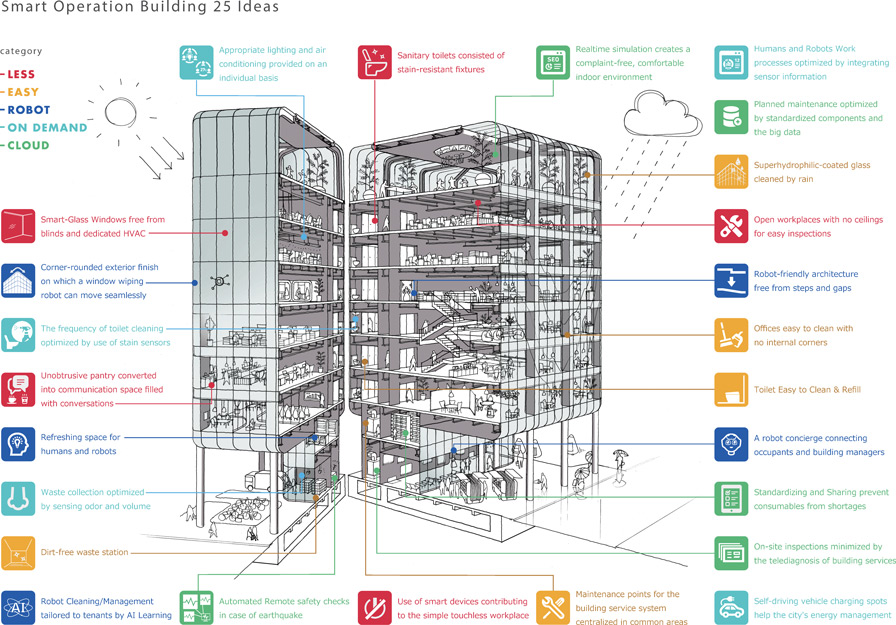
1.LESS: Reducing item count
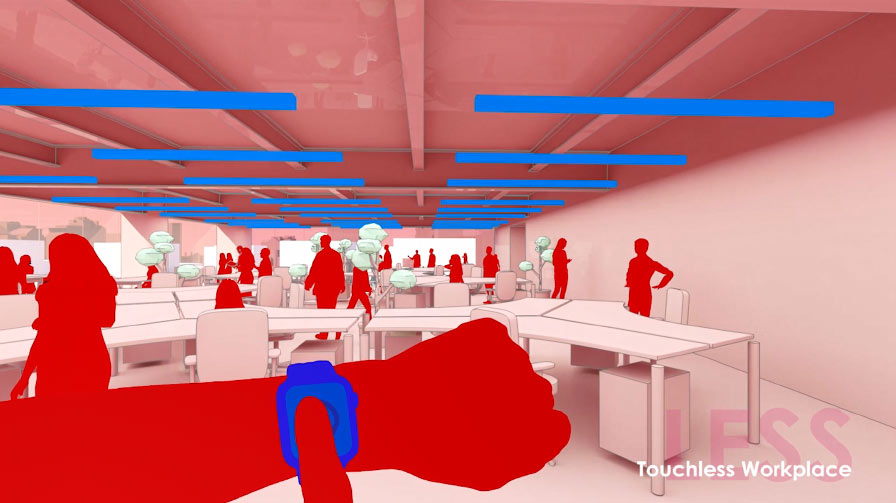
Dust accumulates easily in traditional window blinds. Smart glass is used instead; it automatically adjusts the color intensity of the glass, like sunglasses when the sun is out.
2.EASY: Making things easier
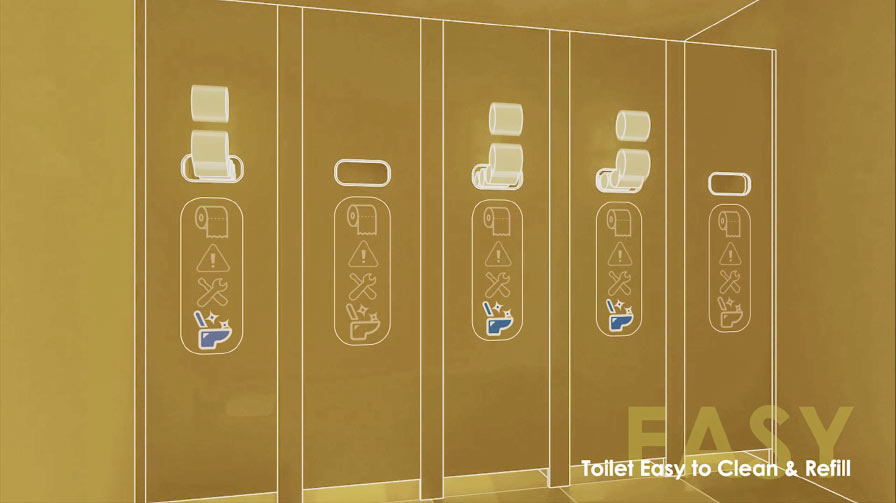
By applying a special coating to window glass, the glass is cleansed with every rainfall, leaving no trace of raindrops, thus reducing manual hand wiping by cleaning personnel riding roof-suspended gondolas. Robots will also clean restroom booths and replenish toilet paper from the outside, improving work efficiency and safety.
3.ROBOT: Working with Robots
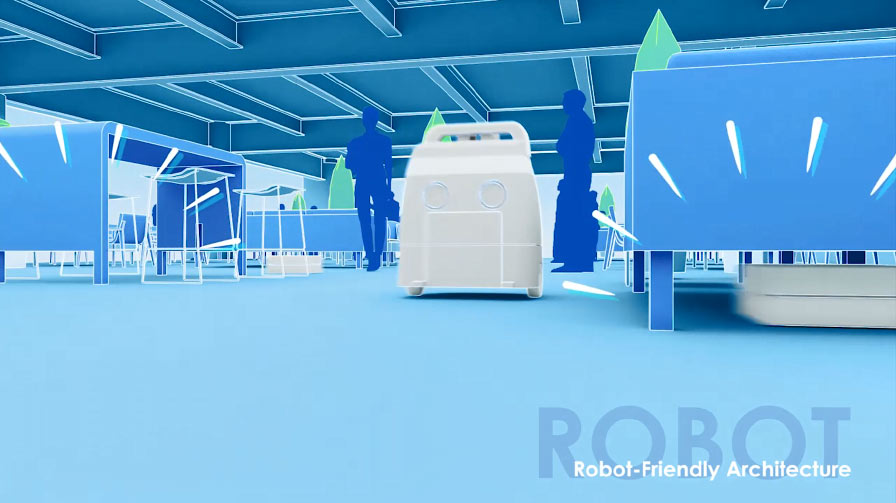
4.CLOUD: Making use of data
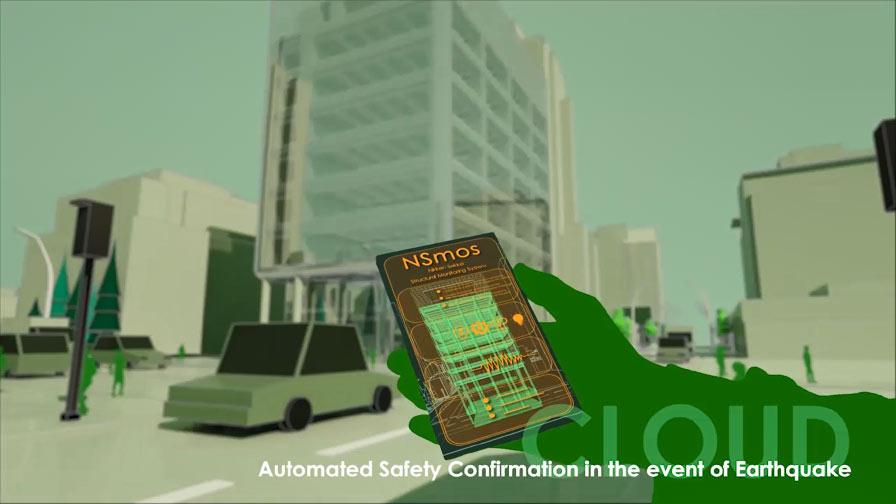
In facility inspections, for example, building managers use their five senses to check and monitor various equipment and devices for air conditioning, electricity, water supply and drainage on a daily basis. By using cameras, thermometers, and sound and smell sensors, facility inspections can be performed entirely remotely. In the event of an earthquake, the system automates and remotely checks for building safety, speeding up the recovery process in emergencies.
5.ON DEMAND: Refraining from unnecessary tasks
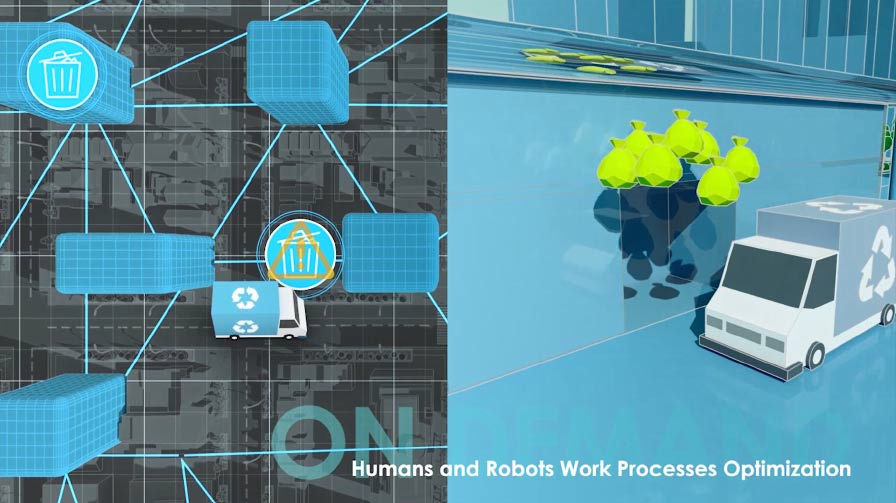
Conclusion
